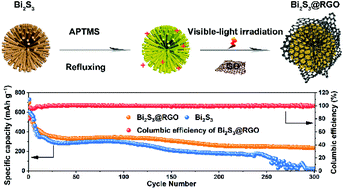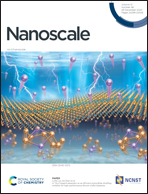Boosting potassium-storage performance via the functional design of a heterostructured Bi2S3@RGO composite†
Abstract
Potassium-ion batteries (PIBs) are considered a promising alternative to lithium-ion batteries (LIBs) for next-generation energy storage due to the abundance and competitive cost of potassium resources. However, the excavation and the development of proper electrodes for PIBs are still confronted with great challenges. Herein, a self-assembled bismuth sulfide microsphere wrapped with reduced graphene oxide was fabricated to form a heterostructured Bi2S3@RGO composite via a visible-light-assisted method and served as the anode for PIBs. The as-prepared Bi2S3@RGO composite presented a high reversible specific capacity of 538 mA h g−1 at 0.2 A g−1 and superior rate capability of 237 mA h g−1 at a high current density of 2 A g−1 after 300 cycles. In particular, the high capacity could be ascribed to the synergistic effect of the conversion and alloying reactions during the electrochemical processes, which was validated by ex situ X-ray diffraction. The fabrication of a unique heterostructure combining the self-assembled Bi2S3 microspheres and flexible RGO boosted the facile charge transfer, leading to the enhanced cyclic stability and rate performance.

- This article is part of the themed collection: 2020 Nanoscale HOT Article Collection


 Please wait while we load your content...
Please wait while we load your content...